|
|
Post by bn7023 on Mar 13, 2024 22:39:56 GMT -8
Is there some background behind the phrase "Don't Sand Me Still!" that we foreigners don't know about? On the right of the photo is an early Athearn product with Accurail brake rigging ( website) installed. 1882
 Click here to enlarge Click here to enlarge |
|
|
|
Post by lvrr325 on Mar 13, 2024 23:03:46 GMT -8
Tyco did an entire series of advertising cars with some on just about every freight car they made. I like the Pepsi-Cola car which has PC reporting marks.
They always used to be mildly collectible, I haven't looked at the market for them in a while.
|
|
|
|
Post by lvrr325 on Mar 13, 2024 23:09:59 GMT -8
|
|
|
|
Post by bn7023 on Mar 14, 2024 1:27:46 GMT -8
Thank you, lvrr325. 1923Let me show you three Tyco 62-ft billboard cars. For more photos, please visit my fantasy model archive.    |
|
|
|
Post by lvrr325 on Mar 14, 2024 1:46:00 GMT -8
I just put trucks on one I got in a box lot, I think a Popsicle car. Figured I had better odds selling that than the New Haven orange 50' boxcar the trucks came off from, the one Tyco made about 10 million of.
|
|
|
|
Post by bn7023 on Mar 14, 2024 9:39:55 GMT -8
|
|
|
|
Post by wagnersteve on Mar 14, 2024 12:22:42 GMT -8
3/14/24 ("Pi Day" and, apparently, also "National Potato Chip Day")
starting about 4:10 p.m., EDT
bn7032, "Don't stand me still" is supposed to be a "Pennsylvania Dutch" phrase (i.e., one usedby descendants of German-speaking settlers in southeastern PA, broadly defined, whose ancestors arrived there mostly in the 1700s) phrase to convey the thought "Don't let me stand still" or "Keep me moving".
Aside from the crude cast on details, including corner steps, grab irons, ladders, running boards, etc., a few Tyco or Mantua HO models are the best pre-made version of certain car types, or at least decent starting places for improvement. I believe that's true for one class of wood-sided PFE 40' ice-cooled reefers, for example. That's one reason I've held onto the main body casting for one. The old model of a low-sided riveted steel gondola is the best starting place for a particular group of D&H gons unless you want to build it entirely from scratch; I've stockpiled at least two or three of those and intend to follow an old magazine article I don't have time to look up right. now.
bn7032, I think the biggest improvement you could make on your Tyco Ralston Purina reefer is to replace the brake wheel.
|
|
|
|
Post by bn7023 on Mar 14, 2024 15:56:57 GMT -8
Thank you, wagnersteve, for your valuable knowledge. My long-standing question has been solved. In our country, there is a phrase with the following meaning; "Don't be timid through your eyes. Keep moving your hands." Faced with a pile of Tyco & others, I too must be inspired. 2113 |
|
|
|
Post by sd40dash2 on Mar 14, 2024 16:10:39 GMT -8
... On the right of the photo is an early Athearn product with Accurail brake rigging ( website) installed. 1882
Thank you for the earlier underframe photo!
Glad to see you have the Accurail brake parts in your stock. Aren't they great? May we see an underframe photo of yours with that part installed?
What do the light grey numbers in your posts mean?
Have fun!
|
|
|
|
Post by bn7023 on Mar 14, 2024 18:42:02 GMT -8
sd40dash2, are you asking me to explain about Accurail's brake rigging? I don't have the confidence to write well in English, so I always use lots of pictures. I bought a set of 30 in 2014. They were attached to Athearn models mainly. I think this product is easy to use. It does feel like it's floating a little too much from the underframe, but it doesn't bother me unless I stare at it closely. 2185Two mounting holes are required, and their diameters are written in the instruction sheet. I only own metric drill bits, so the numbers in the following photo are in millimeters. The plastic pieces must be glued in place beforehand. Mark the position of the hole with a punch, and open it by holding the drill bit in a pinvise.  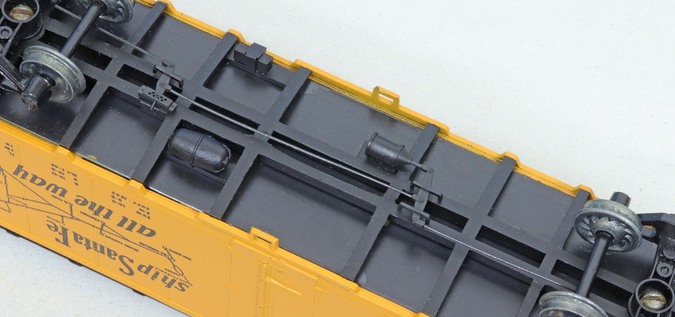 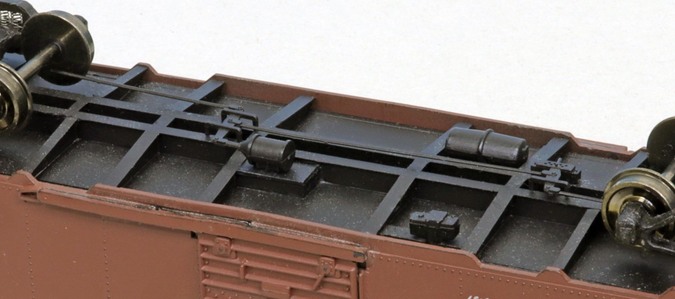 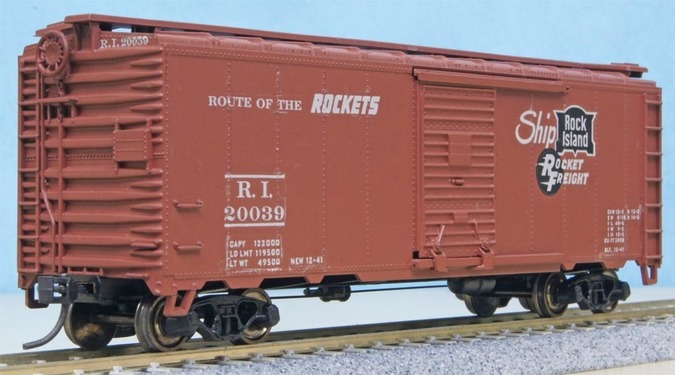 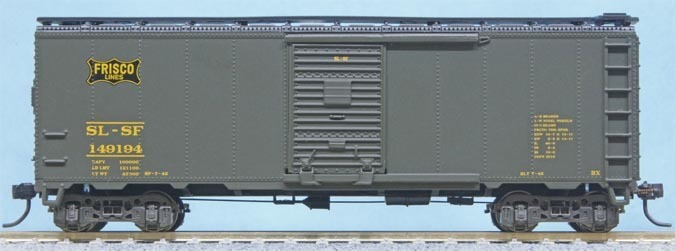 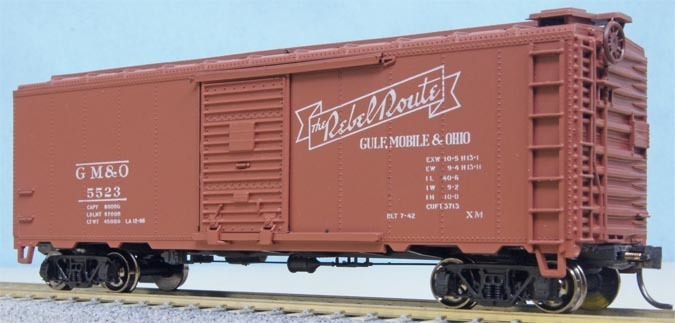 The whole process wasn't too difficult, but there were some models where the feet didn't fit properly. I think the precision was not sufficient, such as the perpendicularity of the hole. Since the material is POM (polyacetal, Celcon, Delrin, etc.), adhesion and painting are difficult. 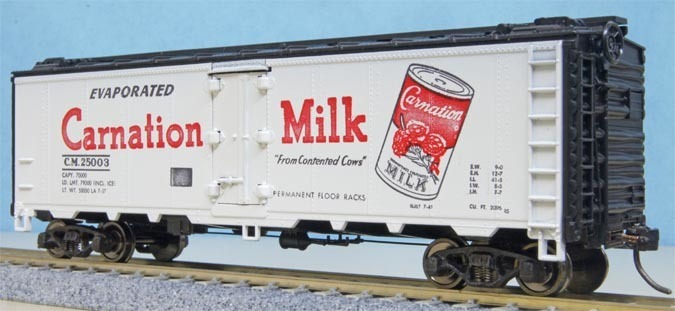 By the way, the light gray numbers in my posts are the number of Views at the posted time. The idea is that if I review it later, I will be able to see at when the number of views increased. |
|
|
|
Post by sd40dash2 on Mar 14, 2024 19:11:29 GMT -8
^ Great reply, thank you for all the photos, I like your approach and clever about the grey #s too!
|
|
|
|
Post by wagnersteve on Mar 15, 2024 18:30:37 GMT -8
3/15/2024, starting about 9:22 p.m., EDT, finished over an hour later
bn7023, I apologize for having mistyped the "name" you use on this forum in my post yesterday. Ane thanks for your latest post, which I saw just a few minutes ago.
The article on building a Delaware & Hudson gondola starting with a Tyco car was by the late Richard Henderson, a great HO modeler who mostly modeled railroads in California; it was in an issue of the former Prototype Modeler magazine dated October 1979. I'm quite sure that I bought that during my only brief stay in Los Angeles, in 1980, at the Troxel hobby shop well west of where I was attending a symposium at the University of Southern California. Henderson usually modeled railroads with a large presence in California.
You may not be familiar with the Ralston Purina Company. It was already old, by US standards, by 1954, the date on your model; Purina Mills was formed in 1894 by William H. Danforth, to produce feed for several kinds of farm and pet animals. A few years later it got the rights to produce Ralston, breakfast foods for people made from whole grains, and became Ralston Purina. The red and white checkerboard design was used from 1902; Danforth remembered seeing a whole family wearing clothes with that pattern of decoration made from the same bolt of cloth when he was a child. It was used not just on freight cars but on buildings where animal feed was stored and sold and also on cardboard cereal boxes. The firm's headquarters in St. Louis, Missouri, was called "Checkerboard Square". I remember hearing on the radio in the late 1940s and early 1950s, before my family had a television set, ads featuring a "jingle" based on an old song, "The Rock Island Line Is the Road to Ride" with new words about eating "Hot Ralston" at breakfast.
I remember John Danforth, a grandson of the firm's father, who was both a lawyer and a Protestant Episcopal priest; he became Missouri's Attorney-General and then was elected as a Republican to the United States Senate three times, serving there for 18 years. His family supported a number of charities, including a summer camp north of Lake Winnipesaukee in New Hampshire, where the young people ate several kinds of Ralston Purina breakfast cereals that were rarely seen in the northeastern USA. The most familiar ones were Rice Chex and Wheat Chex. One of my favorite restaurants in a former railroad passenger station is not from there, in Center Ossipee. In that small community there is an old feed dealership with several layers of old advertising on its very rusty and weathered corrugated metal covering, including, as a remember, a Purina Chows checkerboard.
I learned just this evening that Ralston Purina itrself no longer exists. A newer agrobusiness still makes and sells Purina Chows for animals. The breakfast foods now belong to Nestle -- there should be a "southwest to northeast" slash above the second e -- , based in Switzerland.
|
|
|
|
Post by bn7023 on Mar 15, 2024 23:36:32 GMT -8
|
|
|
|
Post by Christian on Mar 16, 2024 1:27:24 GMT -8
I learned just this evening that Ralston Purina its self no longer exists. A newer agribusiness still makes and sells Purina Chows for animals. The breakfast foods now belong to Nestle -- there should be a "southwest to northeast" slash above the second e, based in Switzerland. Nestl éMost of Ralston Purina has been divested by Nestlé. Purina Chows is owned by Land O' Lakes and retains the checkerboard service mark. Other parts of Ralston Purina are owned by Cargill and General Mills. (There are several ways to present diacritical marks. What I currently do is find the word on Google, copy, and then paste using shift/ctrl/v which removes formatting. For example, déjà vu) (If you are iOS enabled, use the ⌘ key instead of ctrl.) |
|
|
|
Post by wagnersteve on Mar 16, 2024 3:26:54 GMT -8
3/16/2024, starting about 6:49 a.m., EDT, with several interruptions
Christian, thanks for your latest post, which I've just now read. I'll check with my older son to see whether I'm "IOS enabled".
bn 7023
I think that red and white checkerboard cloth was most often used for tablecloth and women's aprons, kerchiefs or scarves and possilbly skirts; it was unusual for men to wear it. And William H. Danforth did recall seeing a whole family wearing clothes obviously made at home from a single bolt of such fabric. A "bolt" in that sense of the word was a whole roll of cloth, sometimes somewhat loosely folded rather than cylindrical. In the USA fabric stores still sell cloth by the yard; customers sometimes buy a bolt of it or even more. At least one of my grandmothers did a lot of sewing at home using a treadle-operated Singer sewing machine that eventually was electrified. The New Jersey, Indiana & Illinois railroad, a subsidiary of the Wabash, was named for states in which Singer had factories.
The MRS reporting marks on your model belonged to the Manufacturers Railroad in St. Louis, which was a subsidiary of the Anheuser-Busch brewery; many MRS cars carried beer and ale.
Laconia, New Hampshire, was famous as a place where horse-drawn vehicles were made, including "stage coaches" (sometimes called Concord coaches) used throughout the country in the nineteenth century, including the West. The Boston & Maine Railroad had major shops there that built railroad cars, notably passenger cars. The Laconia company that made HO car kits was originally in the same city, moved to California and was bought by Binkley. The ad you posted is wrong to call the car shown a boxcar. It is a reefer (refrigerator car); the same word also means a cigarette filled with marijuana, not tobacco. Sometimes both boxcars and reefers were called "house cars". The "embossed aluminum sides and ends" were aluminum foil permanently attached to a thin cardboard backing. The paint was thin and in a few cases lettering that should have been white was simply the aluminum foil showing through. But I really injoyed building a few Laconia and Binkley/Laconia kits. Laconia was one of the first model railroad kit makers to produce the same paint scheme on cars in multiple numbers, usually three, I think.
Another famous builder of horse-drawn vehicles was Studebaker, based in South Bend, Indiana. It switched to building automobiles and merged with Packard. The merged company was renamed American Motors in the 1950s and, led by George Romney, built Ramblers, the first "compact" cars made in the USA, which were advertised as being more economical to buy and use than the "gas-guzzling dinosaurs" General Motors, Ford and Chrysler were making at the time. Romney became Governor of Michigan ran for President of the US, unsuccessfully; his son Mitt became Governor of Massachusetts and a US Senator from Utah; he was defeated for the US Presidency by Barack Obama. Singer Sewing Machine's Indiana plant was also in South Bend but was not served by the Wabash subsidiary. Notre Dame University, famous for its American football team, called the "Fighting Irish", is very close to South Bend. The Chicago, South Shore & South Bend electric interurban railroad no longer extends to downtown South Bend; I rode its full length round trip in 1970.
The quality of HO car kits made by C&BT shops varied greatly. Some of their boxcar kits were very good, though the lettering of some D&H cars wasn't quite correct; their 40' Santa Fe reefers were not very accurate.
|
|
|
|
Post by Christian on Mar 16, 2024 5:59:59 GMT -8
I'll check with my older son to see whether I'm "IOS enabled". Save him the laugh. Look at your keyboard and if you see an apple with a bite taken out, you have a machine running iOS. "iOS" is Apple slang for their operating system. Although, hearing the word "slang" will make an Apple lawyer smile. And prepare paperwork . . . |
|
|
|
Post by bn7023 on Mar 16, 2024 12:14:28 GMT -8
BN, AAR 1937 40' Double Door Boxcar (C&BT Shops) 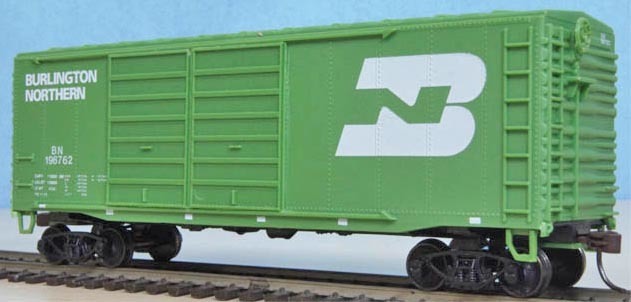 I only have memories of having a hard time with the C&BT Shops box cars. These were junk new in stock. There is a saying in our country "the kid is a handful, but he/she is so cute." However, what about kid who require too much handful? 2540This BN car was assembled as a stock kit first, and the body became 5/64" (2mm) taller. I left it alone for 16 years, and in 2011 I removed the roof walk and shaved off the body bolsters. Then I attached decals COTS, yellow dot and ACI label. The A-end ladder is full height, so I added that "indulgence" sticker. I think applying decals is one of effective ways to eliminate junk. 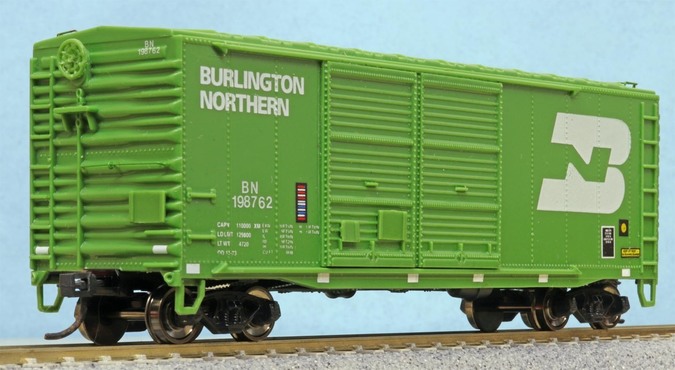 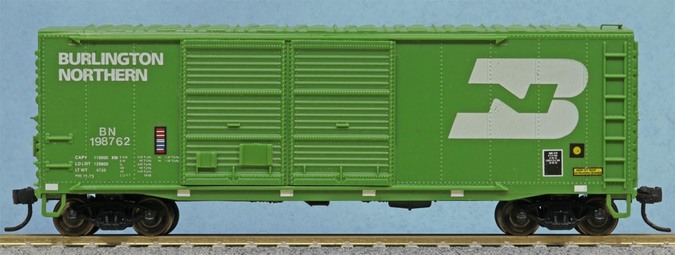 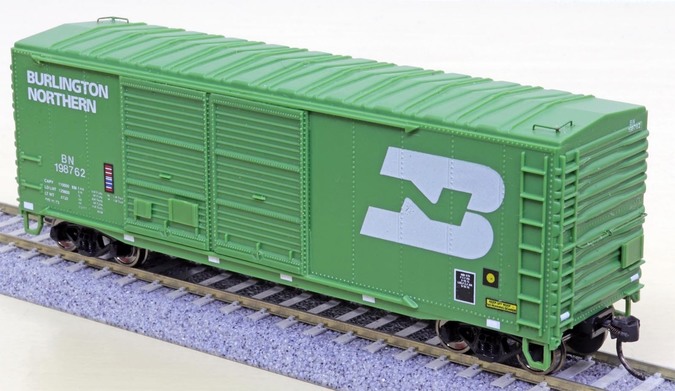 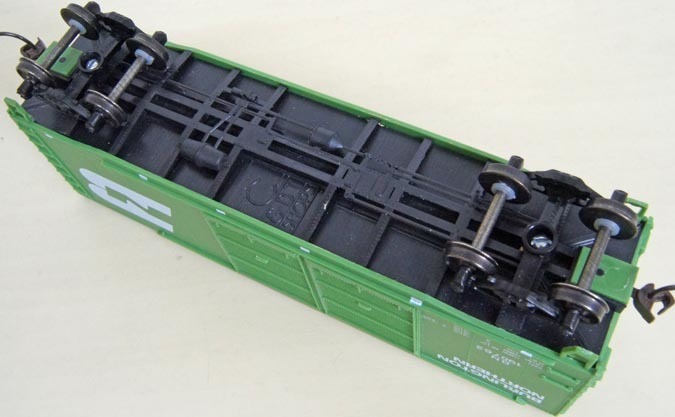
|
|
|
|
Post by grabirons on Mar 16, 2024 12:46:20 GMT -8
I recently acquired some CBT shops assembled kits. I remember seeing their ads in Model railroader magazine for a time period but no later than the early 2000s. What happened to them as a company? The cars I have are decent. Two kits are unassembled the other four are assembled different versions of 40 foot box cars. Nice metal wheels that are different than other Wheels and I don't think they're blackened, they appears to be steel? One of the cars actually has a separate grabirons but it looks not so good, as they are standing too far off the body. Anyways what happened to them as a company?
|
|
|
|
Post by bn7023 on Mar 16, 2024 13:19:57 GMT -8
According to my dictionary; C&BT Shops was a plastic injection kit manufacturer founded in 1986 by Dick Shwiger. They supplied HO-scale boxcars, claimed was true to scale, and sought to sell the business in 2014 ( Sept. 2014 issue, page 131 of MRH magazine). The website was confirmed to have disappeared in Oct. 2022. See the MR forum for the reputation. ---Is this translated properly? 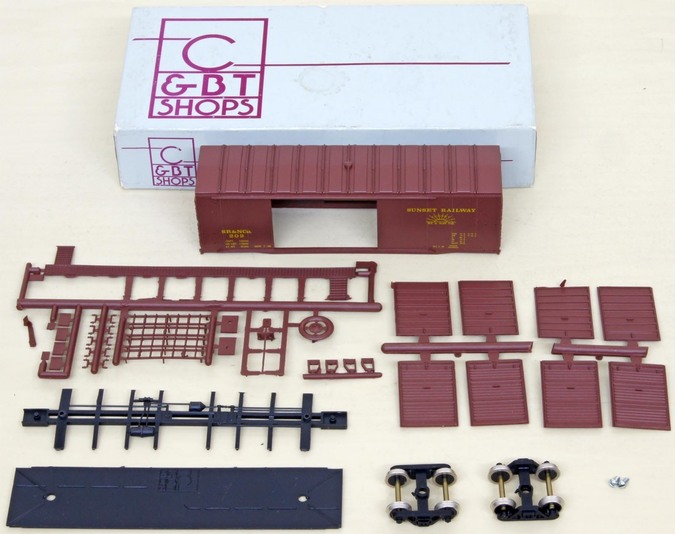 |
|
|
|
Post by wagnersteve on Mar 16, 2024 17:14:11 GMT -8
3/16/24, about 9:05 p.m., EDT
bn7023, your translation in your most recent post appears to be just fine. I believe that the Sunset Railroad & Navigation Co. for which the car in the photo is lettered was the HO model railroad built by Linn Westcott, a longtime Kalmbach employee who was editor of Model Trains when I first started in HO in the late 1950s and later was editor of Model Railroader. His innovations included some innovative wiring techniques and L-girder framing for layouts. One of Athearn's first HO mostly plastic steam locos, a tank engine that the firm called a "Little Monster" was based on a scale drawing in MR that Westcott had drawn many years earlier, complete with lettering for his own N - W that was his HO railroad before he built the Sunset. Linn was a nickname for his actual first name, Linnaeus, which had been the given name of the Swedish biologist who devised the Latin binomial nomenclature used for the scientific names of species of plants and animals.
|
|
|
|
Post by bn7023 on Mar 16, 2024 19:04:19 GMT -8
|
|
|
|
Post by lvrr325 on Mar 16, 2024 23:17:39 GMT -8
Tyco also offered the baby Hi-Cube in that Purina scheme and I think the 40' 4-bay hopper in a variation of it. You used to be able to research this stuff with Tony Cook's pages but about half of it is down and can only be accessed with the Wayback Machine.
It was the ideal car to park next to your Suydam Purina Chows feed mill. Those don't look bad when built up, but they do stand out on your layout.
Athearn made a ton of those 0-4-2 switchers. I have multiple parts engines in a box here somewhere. They usually will run, but almost always the shell is broken below the snap tabs, is missing one or both cab steps, and the compressor or whatever it is on the side of the boiler is gone.
|
|
|
|
Post by wagnersteve on Mar 17, 2024 5:10:40 GMT -8
3/17/24 -- St. Patrick's Day -- the headline on the short weather forecast at the bottom of the front page of the Boston Sunday Globe, often one of the humorous highlights of that paper, daily as well as Sunday, is "Slop of the morning to ya!", a takeoff on the greeting "Top of the morning to ya" often spoken by Irish-Americans in this area, referring to some rain showers today -- starting at 8:38 a.m. EDT, but with interruptions.
bn7023, thanks for your latest post! You have amazing ability to find old material on model railroading. Athearn's first larger steam loco was a Pacific(4-6-2) based on modern types built by Lima in 1934 (class P-4a, road numbers 3710-3714) and/or in 1937 (class P-4b, numbers 3715-3719). The P-4a's were built with streamlined shrouding on the top of their boilers that was removed in the early 1940s. All the locos in both classes were named in a contest in the 1930s; the names were on a placard attached to the running board above the rear drivers. When built all had the then standard when rectangular Boston & Maine herald on the sides of their tenders; this was replaced by a gorgeous gold Roman Italaic Boston & Maine with red shading in the 1940s. Nearly all were scrapped in 1953, the 3714 in 1954. The only survivor, 3713, "The Constitution" was displayed for years outside Boston's Museum of Science. It was sold to F. Nelson Blount, who moved it to his Steamtown in Vermont. With many other locos and cars, it was relocated to Steamtown National Historic Site in Scranton, PA; a project to restore it apparently has stalled. Irv Athearn probably chose to model this unusual type of 4-6-2 because he grew up in New Engalnd, I think in Maine, though the factory for making model railroad equipment was in Southern California. Ge planned to use Hi-F drive with rubber bands transmitting power to the axles, as on his earliest diesel models; that didn't work for the. Pacific; I'm not sure any of those were actually marketed. The gear drive that was used instead did not earn a very good reputation. I was given one with its chassis replaced by a Mantua one.
lvrr325, thanks for your latest post as well. A kitbashed combination farmers' supply company and lumber yard on my layout has a small Purina checkerboard on it; another small feed "elevator" that's part of a preprinted backdrop has no lettering.
|
|
|
|
Post by grabirons on Mar 17, 2024 8:07:19 GMT -8
I went to a train Show recently and only bought a couple cars but I noticed the metal wheels were extremely dirty and had dirt actually caked on to the wheel faces so I used one of my flat head screwdrivers to scrape the wheels off. Then I used one of my new fiberglass brushes and it completely cleaned the wheel faces off, and highly polished them up.The results are incredible. I would share photos but unfortunately I never do it correctly on here or I don't do it right. Next I'm going to try my new fiberglass brushes on some Kadee Wheel sets that I have and see how that works because the kadee wheel sets have a similar polished metal look that the c&bt shops cars wheels have.
|
|
|
|
Post by wagnersteve on Mar 17, 2024 11:49:40 GMT -8
3/17/24, starting about 3:45 p.m., EDT
grabirons, thanks very much for your latest pst. Where did you get your fiberglass brushes? They sound appealing. I used to use brushes with aluminum brushes to remove unwanted blackening from metal wheel treads, but doing so scratched the threads. More recently I've used fairly rough wooden stirrers for hot drinks, given away by restaurants and coffee shops and some employers, many of which, believe it or not, are imported from mainland China, parts of which suffer from excessive cutting of trees in forests. I tend to paint the visible parts of wheelsets other than their treads.
|
|
|
|
Post by grabirons on Mar 17, 2024 17:54:00 GMT -8
3/17/24, starting about 3:45 p.m., EDT grabirons, thanks very much for your latest pst. Where did you get your fiberglass brushes? They sound appealing. I used to use brushes with aluminum brushes to remove unwanted blackening from metal wheel treads, but doing so scratched the threads. More recently I've used fairly rough wooden stirrers for hot drinks, given away by restaurants and coffee shops and some employers, many of which, believe it or not, are imported from mainland China, parts of which suffer from excessive cutting of trees in forests. I tend to paint the visible parts of wheelsets other than their treads. Originally I bought them on Amazon, as a three pack but, I am sure you can find somewhere online in mainland Japan and get them sooner. The product is called "fiberglass scratch brush" this link Megacast Fiberglass Scratch Brush Pen - 3 Pack - Jewelry, Watch, Coin Cleaning, Electronic Applications, Removing Rust and Corrosion a.co/d/bo6O5rm is a shortened Amazon link. I used a pliers to pull out about 4mm of fiberglass brush, and then tighten the end cap on it to secure it in place. These brushes last for a lifetime. These are also great for cleaning locomotive Wheels and getting older locomotives to run again due to corrosion and tarnish. Could also possibly be used to clean track, although I haven't tried it. Anyway I've been going through my Freight cars checking Wheels and cleaning them and it just really brightens up the wheel faces and makes them look new. |
|
|
|
Post by hudsonyard on Mar 17, 2024 18:04:11 GMT -8
I've built quite a few of those C&BT kits from the clubs backstock of donated kits or cars, they go together relatively easy, they look fine for something thats gonna disappear into the 1200+ car fleet.
|
|
|
|
Post by lvrr325 on Mar 17, 2024 23:33:34 GMT -8
3/17/24 -- St. Patrick's Day -- the headline on the short weather forecast at the bottom of the front page of the Boston Sunday Globe, often one of the humorous highlights of that paper, daily as well as Sunday, is "Slop of the morning to ya!", a takeoff on the greeting "Top of the morning to ya" often spoken by Irish-Americans in this area, referring to some rain showers today -- starting at 8:38 a.m. EDT, but with interruptions. bn7023, thanks for your latest post! You have amazing ability to find old material on model railroading. Athearn's first larger steam loco was a Pacific(4-6-2) based on modern types built by Lima in 1934 (class P-4a, road numbers 3710-3714) and/or in 1937 (class P-4b, numbers 3715-3719). The P-4a's were built with streamlined shrouding on the top of their boilers that was removed in the early 1940s. All the locos in both classes were named in a contest in the 1930s; the names were on a placard attached to the running board above the rear drivers. When built all had the then standard when rectangular Boston & Maine herald on the sides of their tenders; this was replaced by a gorgeous gold Roman Italaic Boston & Maine with red shading in the 1940s. Nearly all were scrapped in 1953, the 3714 in 1954. The only survivor, 3713, "The Constitution" was displayed for years outside Boston's Museum of Science. It was sold to F. Nelson Blount, who moved it to his Steamtown in Vermont. With many other locos and cars, it was relocated to Steamtown National Historic Site in Scranton, PA; a project to restore it apparently has stalled. Irv Athearn probably chose to model this unusual type of 4-6-2 because he grew up in New Engalnd, I think in Maine, though the factory for making model railroad equipment was in Southern California. Ge planned to use Hi-F drive with rubber bands transmitting power to the axles, as on his earliest diesel models; that didn't work for the. Pacific; I'm not sure any of those were actually marketed. The gear drive that was used instead did not earn a very good reputation. I was given one with its chassis replaced by a Mantua one. lvrr325, thanks for your latest post as well. A kitbashed combination farmers' supply company and lumber yard on my layout has a small Purina checkerboard on it; another small feed "elevator" that's part of a preprinted backdrop has no lettering. You're correct that the Hi-F Pacific never was sold to the public. I suspect it was to be a tender drive, as the axles on it were the drum type for no apparent reason. There's actually two or three variations of the gear drive, some with plastic drivers, some with metal. Supposedly the tooling was sold to someone who kept it in storage and may still exist. They're not bad runners when in good shape, but the plastic drivers will pick up track dirt. The whole lower half of the engine is cast and I recall seeing one that got the zincpest and was curved like a banana. But that's pretty rare in Athearn stuff. When I was in my teens I picked some cars and an F7 out of a car trunk in a junkyard that was open all summer for years and only closed when enough snow was on it to weigh it down, and I didn't see any pest in those. In fact I had the caboose rolling on a layout after some cleanup. It would be Tyco who "perfected" a tender drive, I believe, the 1974-ish 0-8-0/2-8-0 using a PowerTorque motor to drive tender axles. There were only a handful of others with varying degrees of success, several of which became IHC/Mehano products and converted to a conventional drive. What I have run into a couple times on Athearn though is an exploded motor magnet. I don't know what causes that, both examples were maybe 60s era well used pieces and when they did not run, I opened them to find the magnet still magnetized but shattered into iron filings looking bits. |
|
|
|
Post by Christian on Mar 18, 2024 2:07:28 GMT -8
These brushes last for a lifetime. I bought mine in the late 1960s. Along with a pack of refills, which is not yet empty. I couldn't estimate the number of wheelsets that brush has cleaned. As well as any joint which is to be soldered. As well as chemical blackening that I don't want. As well as . . . and so forth. I learned to clean wheel treads with a wire brush in my Dremel without removing them from the sideframes. Yes, this is a bit risky and takes practice! Now I use Tangent, ExactRail, and Moloco wheelsets as they come out of the package. |
|
|
|
Post by bn7023 on Mar 20, 2024 17:23:24 GMT -8
|
|